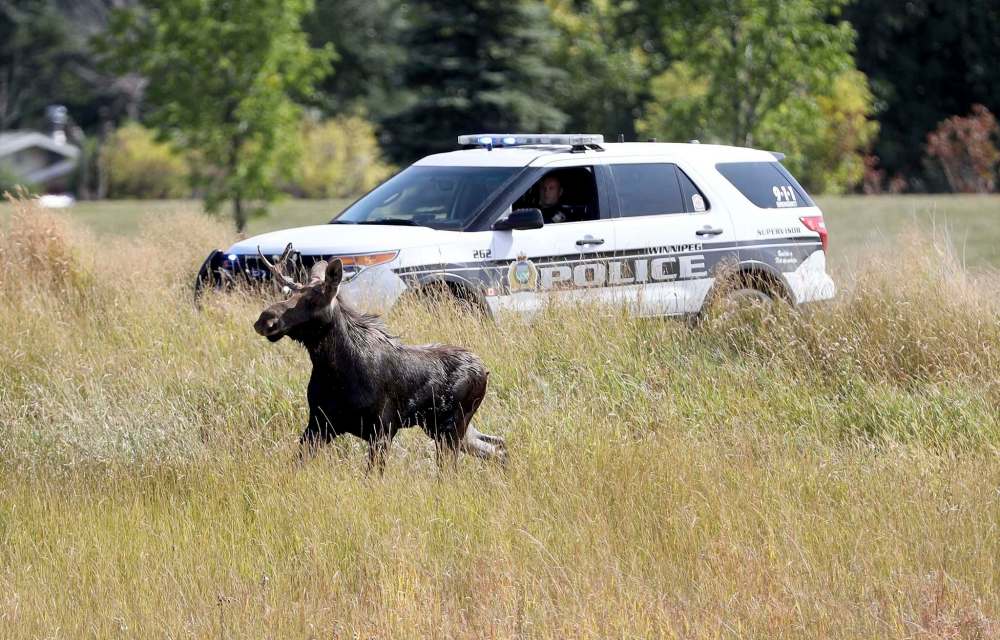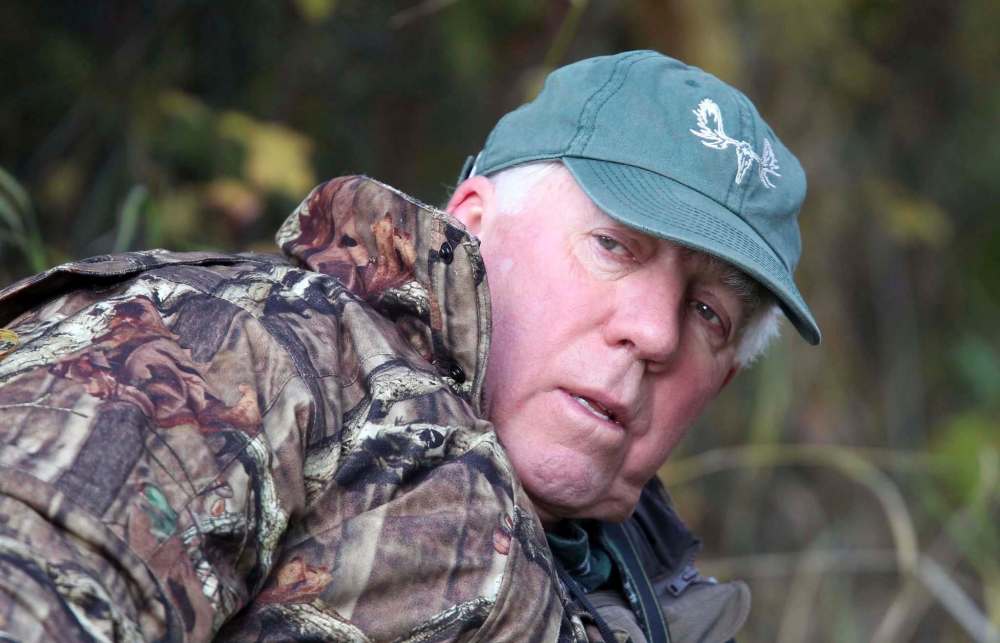Conservation officers to blame for IGF Moose death: wildlife biologist
Advertisement
Read this article for free:
or
Already have an account? Log in here »
To continue reading, please subscribe:
Monthly Digital Subscription
$0 for the first 4 weeks*
- Enjoy unlimited reading on winnipegfreepress.com
- Read the E-Edition, our digital replica newspaper
- Access News Break, our award-winning app
- Play interactive puzzles
*No charge for 4 weeks then price increases to the regular rate of $19.00 plus GST every four weeks. Offer available to new and qualified returning subscribers only. Cancel any time.
Monthly Digital Subscription
$4.75/week*
- Enjoy unlimited reading on winnipegfreepress.com
- Read the E-Edition, our digital replica newspaper
- Access News Break, our award-winning app
- Play interactive puzzles
*Billed as $19 plus GST every four weeks. Cancel any time.
To continue reading, please subscribe:
Add Free Press access to your Brandon Sun subscription for only an additional
$1 for the first 4 weeks*
*Your next subscription payment will increase by $1.00 and you will be charged $16.99 plus GST for four weeks. After four weeks, your payment will increase to $23.99 plus GST every four weeks.
Read unlimited articles for free today:
or
Already have an account? Log in here »
Hey there, time traveller!
This article was published 11/09/2017 (3006 days ago), so information in it may no longer be current.
Manitoba’s top moose expert blames provincial conservation officials for the death of a young bull wandering outside Investors Group Field Saturday that was shot three times with a tranquilizer gun and later died.
“There’s no way that animal should’ve been drugged at those temperatures,” said Vince Crichton, a retired Winnipeg wildlife biologist and big game manager for Manitoba. “They overheat,” said Crichton, who is one of the authors of the bible of moose biology, The Ecology and Management of North American Moose.
On Saturday afternoon, a roaming young bull moose prompted police to block Chancellor Matheson Drive, delaying the start of the annual Banjo Bowl football game between the Winnipeg Blue Bombers and the Saskatchewan Roughriders. Temperatures were in the mid-20s when the 300-kilogram animal was cornered and hit three times with a tranquilizer dart before it went down.

“If you want to drug it, drug it in the morning or late in the afternoon or evening when temperatures go down,” Crichton said. “It should not have been drugged at that time. I would not be drugging it at this time of day because the risk of the animal not making it is enhanced greatly.”
A provincial government spokesman said Monday it is easy to question conservation officials, but the safety of tens of thousands of football fans was uppermost in their minds.
“Everybody can second-guess how they would have done it, but … unless you’re there and the primary concern is public safety …and that was achieved.”
Police said on the weekend that they were prepared to kill the moose if conservation officers couldn’t sedate it.
At one point during the weekend, media were told that the moose was not injured and had been let loose north of the city. It was transported to a “nice, safe place,” reporters were told.
However, on Monday the province said the moose died en route after being tranquillized and prepared for relocation.

“Public safety is paramount and the officers made every effort to ensure no one got hurt,” the provincial spokesman said.
However, Crichton said once the moose was cornered and away from traffic, it posed no threat to the public.
“He’s not going to go after someone and ram them,” he said. “I’ve dealt with too many to know that,” said the moose expert who has seen more of the big boreal forest dwellers settling on prairie farm fields thanks to a food source and lack of predators.
“He was in a big open field,” said Crichton. “I would’ve backed off. You can keep people around the perimeter. Eventually he might have laid down. Rather than having a dog and pony show with the police and (conservation officers) yelling and running around, you should back off and leave him alone.” Crichton, who lives in Winnipeg, said he wishes that someone would have called him about the moose.
“I would’ve given them some sage advice I have learned over my many years of dealing with them.”
Crichton recalled five or six reports of moose in Winnipeg and has seen a pattern in their arrival.
“What’s really interesting is all of them were year-and-a-half-year-old animals and all of them were bulls except one cow.” He said they show up in the city around the same time — their rutting period.
“A young bull will get out and start moving around looking for a sweetie.”
Manitoba Conservation has been criticized for its handling of other high-profile wildlife cases.
In 2013, the province’s conservation minister changed the way officers enforce the Wildlife Act after a tame deer was shot dead by Conservation officers on the Windy Bay Hutterite Colony.
Then-minister Gord Mackintosh ordered a new directive that wildlife officers may only kill hand-reared wildlife as a last resort.
“I’ve asked that a clear directive be developed to make it clear that euthanasia is the last resort,” Mackintosh said at the time.
A year earlier, Conservation considered euthanizing a bear cub that had been taken in by a St. Malo family after believing the cub had been orphaned.
The bear, which became known as Makoon, was cared for at the Assiniboine Park Zoo for a short time before Conservation released into the wild. The department never revealed where the bear was released.
The move triggered outrage by animal rights’ group, which said it was a death sentence, while thousands of people from around the world had signed a petition asking the province not to release the bear into the wild.
– With files from Larry Kusch
carol.sanders@freepress.mb.ca

Carol Sanders
Legislature reporter
Carol Sanders is a reporter at the Free Press legislature bureau. The former general assignment reporter and copy editor joined the paper in 1997. Read more about Carol.
Every piece of reporting Carol produces is reviewed by an editing team before it is posted online or published in print — part of the Free Press‘s tradition, since 1872, of producing reliable independent journalism. Read more about Free Press’s history and mandate, and learn how our newsroom operates.
Our newsroom depends on a growing audience of readers to power our journalism. If you are not a paid reader, please consider becoming a subscriber.
Our newsroom depends on its audience of readers to power our journalism. Thank you for your support.
History
Updated on Monday, September 11, 2017 5:44 PM CDT: Updates




